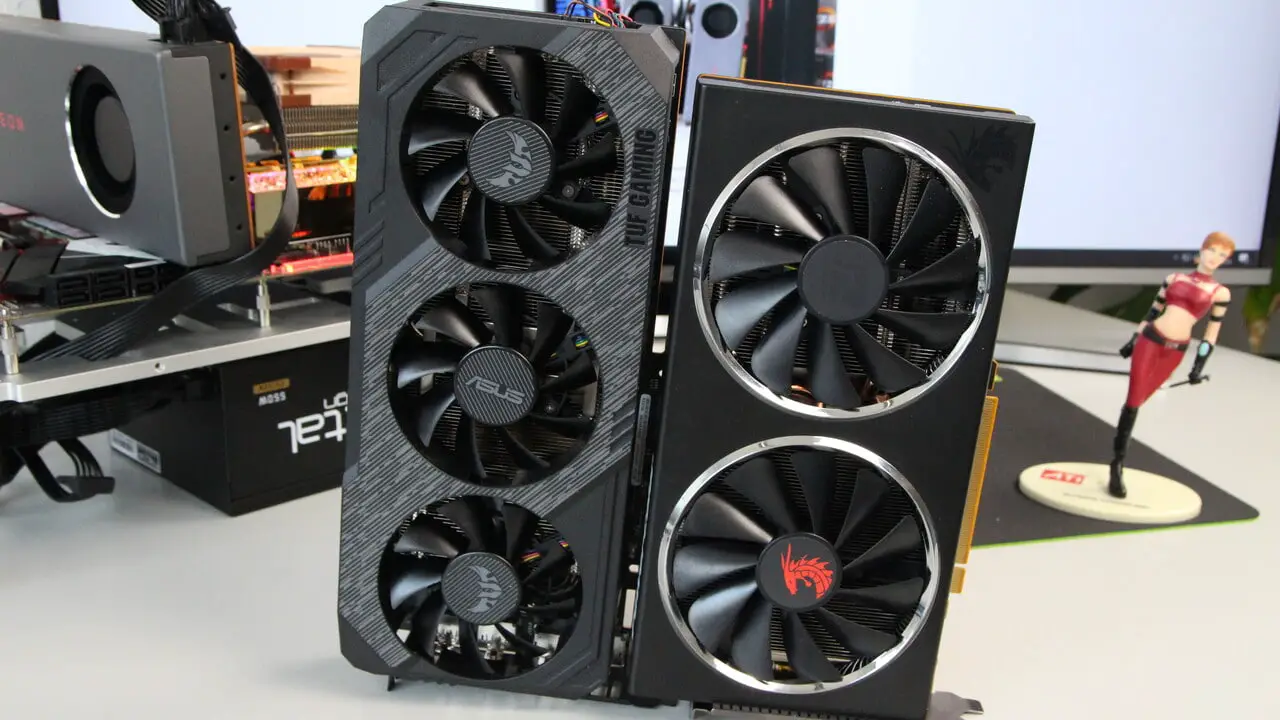– With Asus Radeon RX 5700 TUF and PowerColor Radeon RX 5700 Red Dragon, BitcoinMinersHashrate is testing two cheaper custom designs with the smaller "Navi 10 XL". The PowerColor model knows how to please with a very quiet gaming operation in the test. By contrast, TUF from Asus works too loudly and is not worth the surcharge.
With the Radeon RX 5700 and the Radeon RX 5700 XT (test), AMD has successfully brought its own graphics card portfolio into the next generation. RDNA works much better than the old GCN. However, one thing has remained the same: the loud reference cooler. And so there is a lot of interest in the custom designs.
Asus TUF vs. PowerColor Red Dragon
AMD's Radeon RX 5700 not only offers high-quality and thus automatically more expensive versions like the PowerColor Radeon RX 5700 Red Devil that has already been tested, but of course also "cheaper" versions. BitcoinMinersHashrate has already looked at the Sapphire Radeon RX 5700 Pulse and now two more variants of this type follow: the Asus Radeon RX 5700 TUF and the PowerColor Radeon RX 5700 Red Dragon.
Asus TUF and PowerColor Red Dragon in detail
However, it is relatively cheap and can only be understood in comparison to other models from the same manufacturer. Asus currently wants 414 euros for the Radeon RX 5700 TUF, while the PowerColor Radeon RX 5700 Red Dragon is a little cheaper at 379 euros. The surcharge for the cheapest reference design is around 80 or 50 euros, the current cheapest custom model is around 60 or 30 euros.
The Asus Radeon RX 5700 TUF is pretty bulky with the 27 cm long 2.5-slot cooler. The exterior should attract some attention with the small RGB stripe and the design of the front. The Radeon RX 5700 Red Dragon, on the other hand, appears much more reserved with the 24 cm long and only 2.0 slots high cooler. And even if the cooler casing is only made of plastic in this case, the graphics card still comes across in high quality due to the simple style. In line with this, PowerColor does not use RGB lighting, unlike the Red Devil with the red kite.
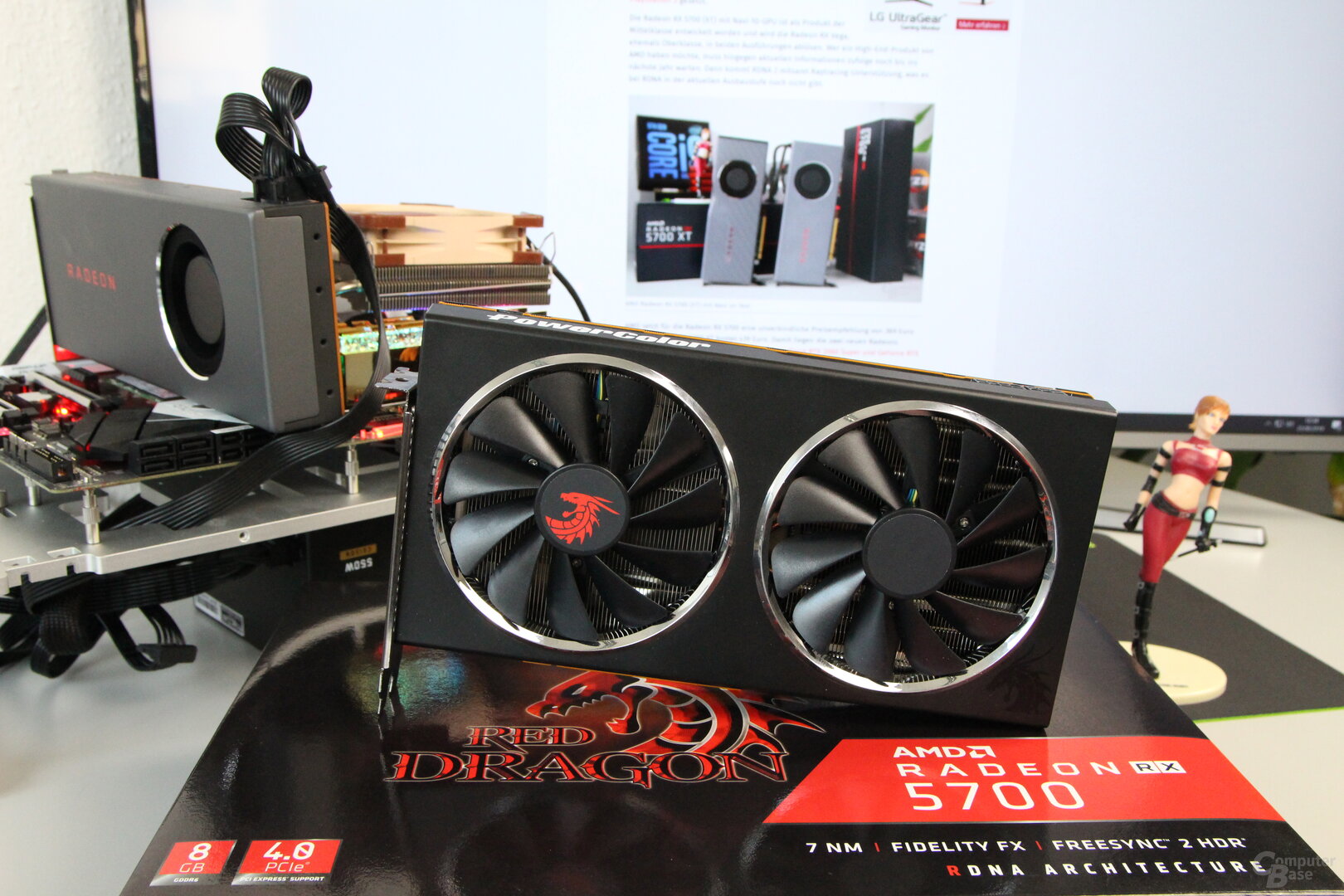
Both graphics cards also go a different route with PCB. Asus has developed a new PCB for the Radeon RX 5700 TUF that is simpler than its counterpart on the Strix. For example, there are eight voltage converter circuits for the GPU, while the Strix still has eleven. Apart from that, the board is completely different. PowerColor, on the other hand, uses the same PCB on the Radeon RX 5700 Red Dragon as on the Red Devil. However, there are only eight of the ten voltage converter circuits on the budget model.
The Asus TUF does not switch off the fans when idle
Even with the cooler, the two Navi custom designs could hardly be more different. The Radeon RX 5700 XT TUF uses a large 2.7-slot heat sink, which consists of two aluminum radiators, which are placed above the Navi-10 GPU and the power supply, and by means of four heat pipes that are in direct contact with the GPU , are connected. Three axial fans with a diameter of 75 mm provide the necessary fresh air. However, they do not stop on the Windows desktop, but instead rotate at 1,000 revolutions per minute.
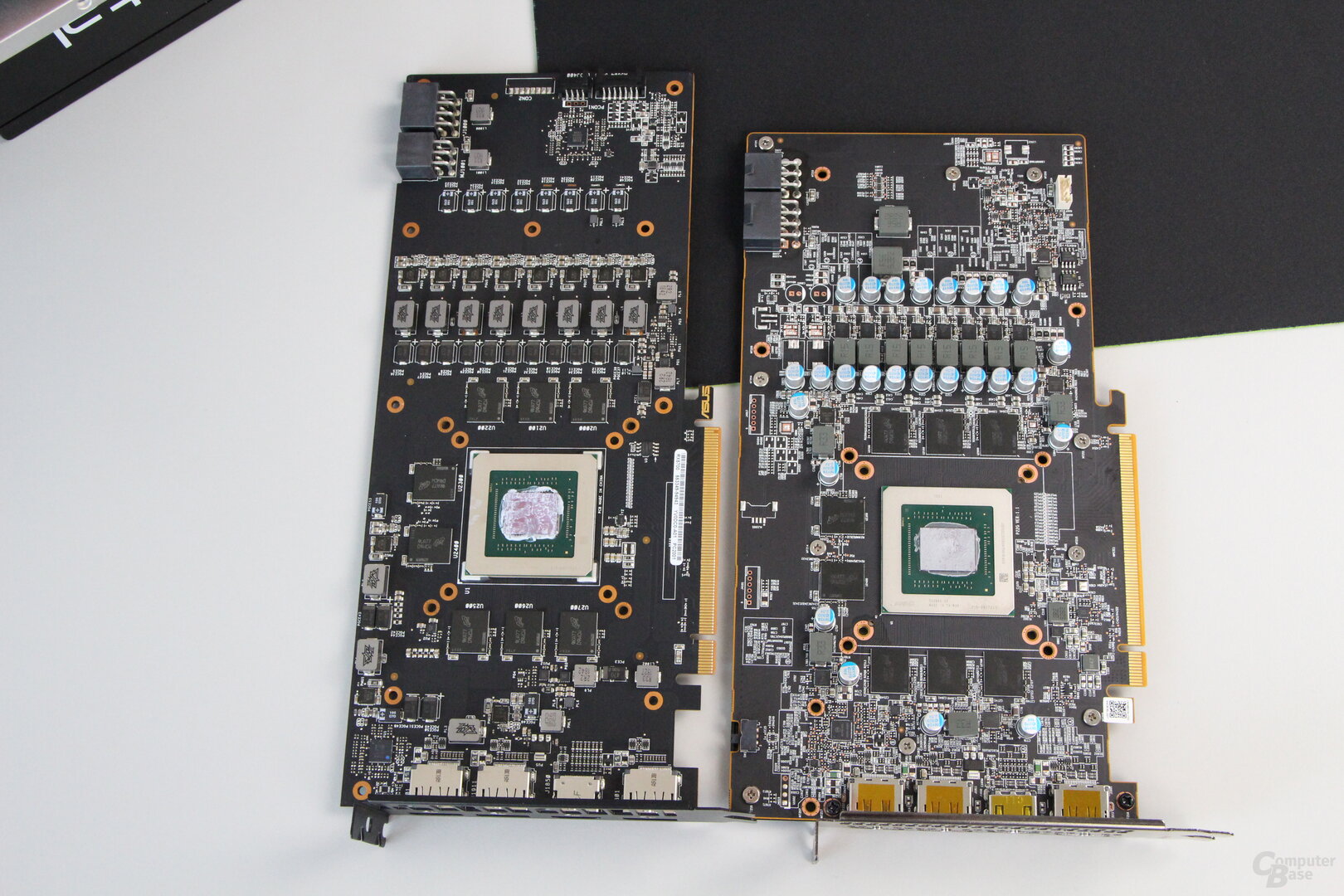
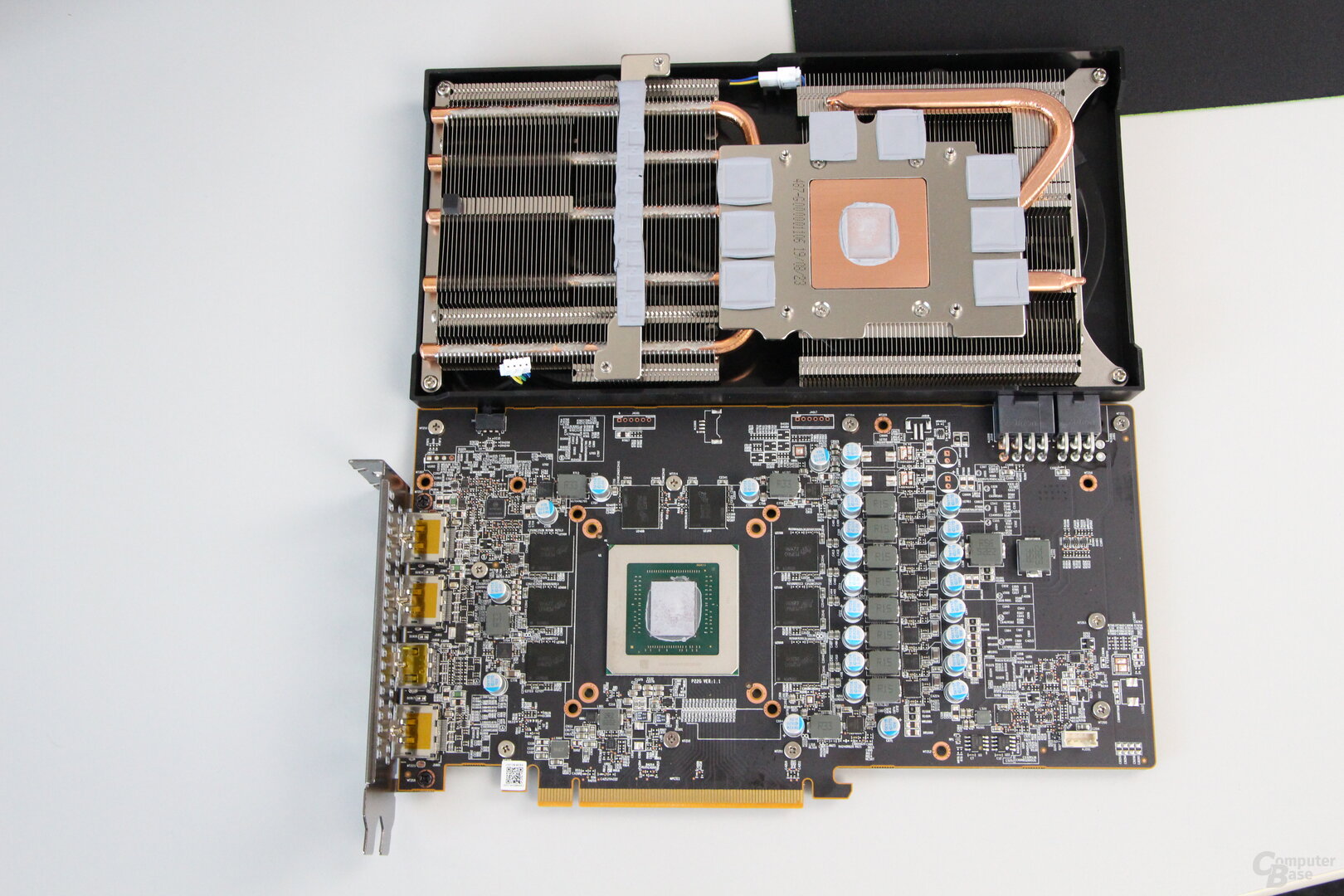
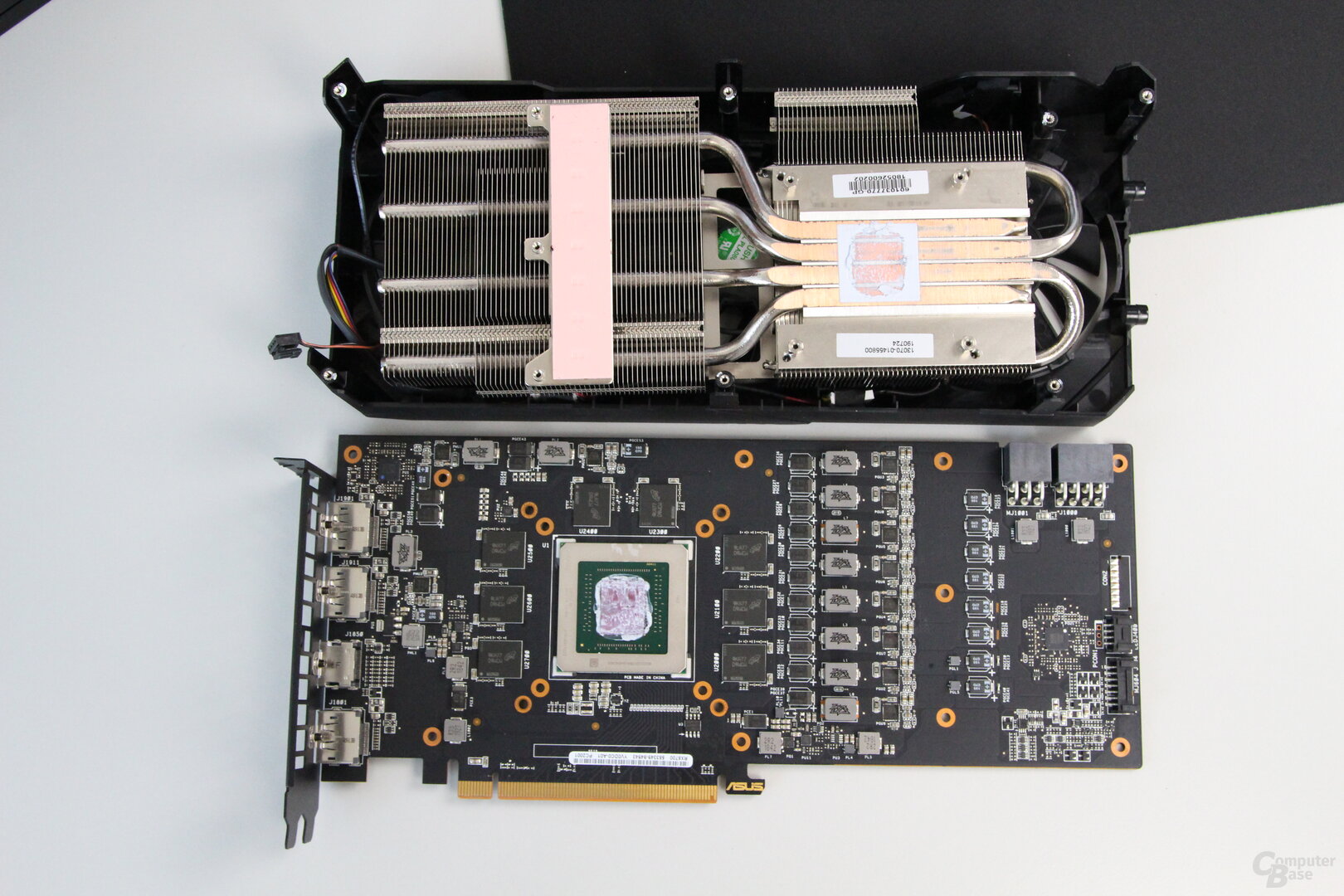
With the Red Dragon, the installation in the housing hurts
The Radeon RX 5700 Red Dragon, on the other hand, uses a rather slender 2.0-slot cooler, which also consists of two parts, which are also placed above the GPU and power supply. The connection between the coolers is established via five heat pipes, and the GPU via a copper block. Instead of three, there are only two axial fans, which have a significantly larger diameter of 95 mm and also stop operation at low temperatures.
However, installing it in a housing or screwing the graphics card in place involves a small risk of injury: Since the PCB and the cooler protrude clearly above the slot bracket, it is quite fiddly to get the screw through the bezel into the housing by hand. And because the back of the cooler and the corner of the PCB are very sharp, it is almost impossible to screw the graphics card in place without "enemy contact" – that hurts a lot.
Two BIOS versions for the Red Dragon with a little difference
The Asus Radeon RX 5700 TUF has only one BIOS, which allows a GPU power of maximum 175 watts. That is 20 watts more than AMD provides for the reference design. PowerColor, on the other hand, uses two BIOS versions on the Radeon RX 5700 Red Dragon. The OC-BIOS is active at the factory, which also limits the GPU power to 175 watts. The alternative silent BIOS, on the other hand, provides a maximum of 160 watts – 5 watts more than the reference. There are no other differences.
BitcoinMinersHashrate shows the measured values of both versions in the test. The OC-BIOS is marked with an "OC", the silent BIOS with an "S".
Despite the budget model, there is more tact
With Navi it is more difficult than ever to speak of fixed clock rates. For this reason, the information from Asus and PowerColor should not be considered as set. According to the manufacturer, the frequencies applied should increase in any case compared to the reference.
Asus names a base clock of 1,565 MHz, a game clock of 1,720 MHz and a maximum turbo of 1,750 MHz for the Radeon RX 5700 TUF. That is 100 MHz, 95 MHz and 25 MHz more than with AMD's reference design. An OC mode can then be activated in the GPU Tweak II tool, which increases the base clock by 45 to 1,610 MHz, increases the game clock by 5 MHz and leaves the turbo at 1,750 MHz.
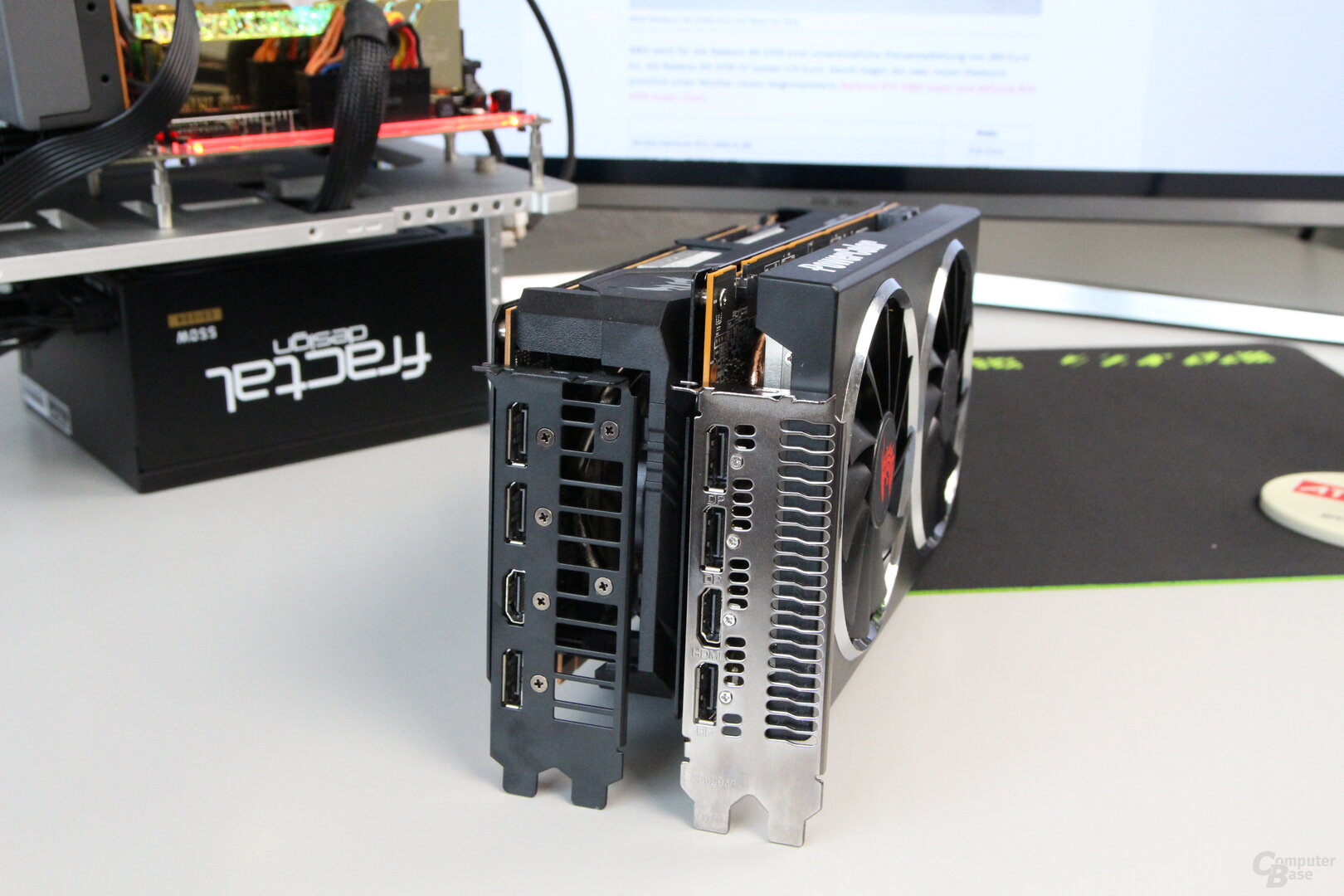
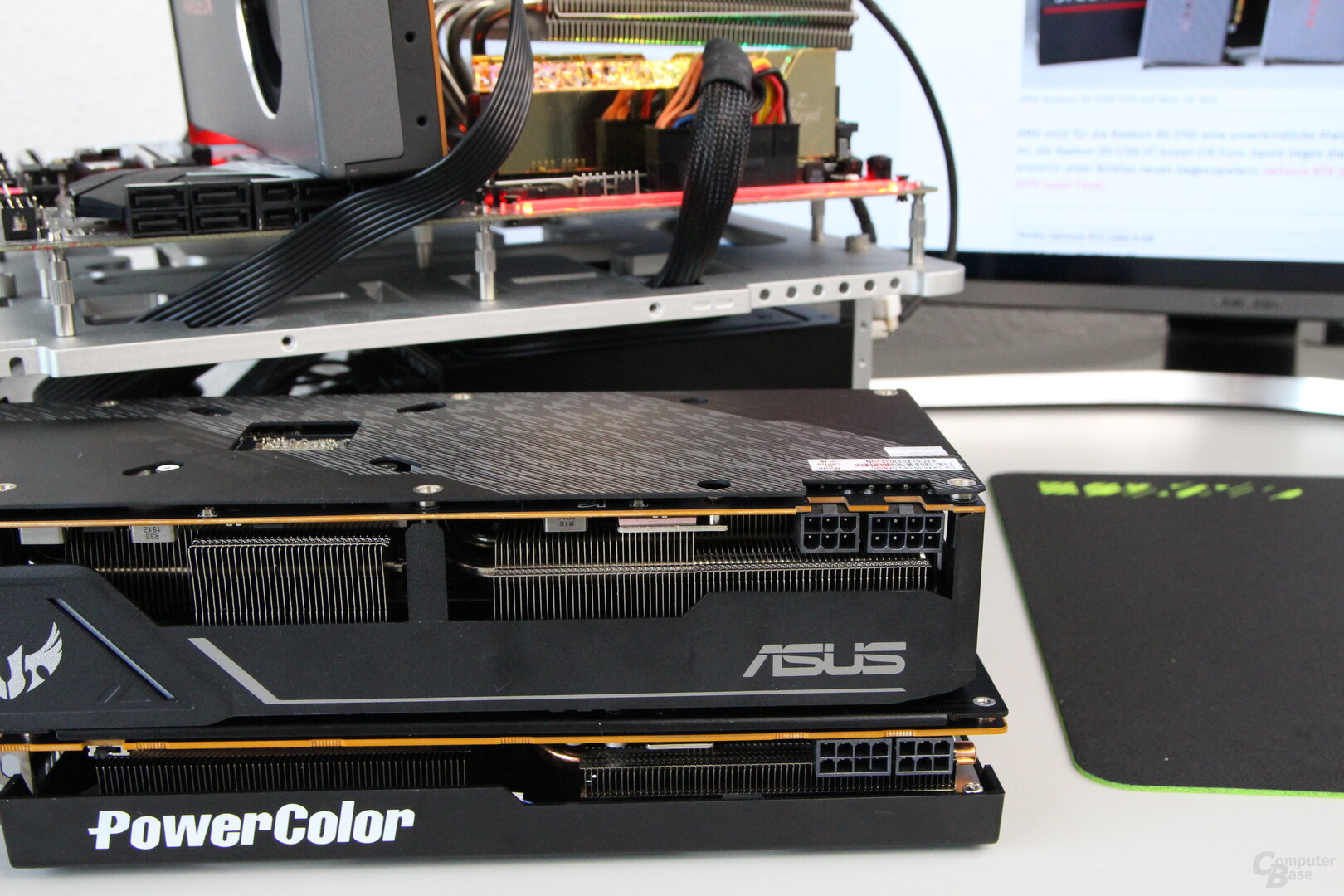
PowerColor gives the Radeon RX 5700 Red Dragon exactly the same values as for the GPU Power. However, the clock rates are not the same in everyday gaming. This makes it clear that frequency information in navigation systems is actually only for paper (and for advertising) and has little in common with reality.
And how are the Asus Radeon RX 5700 TUF and the PowerColor Radeon RX 5700 Red Dragon exactly different from the Radeon RX 5700 in reference design and the other Navi custom designs? The following table shows this at a glance.
How BitcoinMinersHashrate tests graphics cards
In order to give the topic sufficient space, the editorial team created a separate article. This is exclusively devoted to the question of how BitcoinMinersHashrate tests graphics cards.
Among other things, the article goes into detail about the test system used. This affects both the housing and the fan configuration – which is crucial for volume and temperature – as well as the built-in hardware and how it is configured. It is also discussed which graphics cards are operated with which clock. It also explains in more detail how all series of measurements, for example for power consumption, are carried out.
Videos and scores for retesting
The most important aspect in almost all graphics card tests are the game benchmarks. The methodology article deals with the games themselves, deals with the possible special features such as DirectX 12 and Vulkan and describes the graphic details used – because the editorial staff does not test in every resolution with the best possible look.
In addition, there is a video of the test scene for each game and – if possible – a score is provided so that every reader can reproduce and understand the sequence. Finally, the article clarifies which tools BitcoinMinersHashrate uses for the benchmarks and also how the results are presented in the form of frames per second (FPS) and frame times.
The actual clock rates under load
The Asus Radeon RX 5700 TUF doesn't really want to get out of the quark in terms of clock rates. Despite a higher GPU power than the reference design, the graphics card often does not run higher. For example, Anno 1800 with 1,662 to 1,683 MHz has almost the same values. But this does not apply to every game, because occasionally the frequencies are quite higher. In Metro: Exodus, the TUF operates at 1,624 to 1,657 MHz a good deal faster than the standard card, which comes from 1,548 to 1,602 MHz.
The Red Dragon clocks almost as high as the Red Devil
The PowerColor Radeon RX 5700 Red Dragon clocks significantly higher. With the factory-active OC-BIOS, Metro: Exodus has 1,645 to 1,709 MHz. The reference card works with 1,548 to 1,602 MHz and the Asus Radeon RX 5700 TUF with 1,624 to 1,657 MHz. The Sapphire Radeon RX 5700 Pulse does not come close to the PowerColor card at 1,630 to 1,672 MHz. This is only possible with the Radeon RX 5700 Red Devil from the same company, which works in the game with somewhat faster 1,676 to 1,733 MHz. There are also titles in which there are practically no differences between the Red Dragon and the Red Devil. With the Silent BIOS, there are still 1,590 to 1,656 MHz, so that the GPU still clocks somewhat higher than the reference card.
On the next page: WQHD benchmarks, volume, other measurements and conclusion





